
You want a low price, fast delivery, and zero drama. The catch? Antidepressants like paroxetine (the generic for Paxil) are a magnet for shady websites. Here’s a straight path: what you’re actually buying, what a fair price looks like, how to verify an online pharmacy, how paroxetine compares to similar meds, and what to do next so you get your treatment-safely, legally, and without surprise costs. If you’re here to buy generic Paxil online, keep this simple rule in mind: if a site says “no prescription needed,” close the tab.
What you’re actually buying: generic Paxil (paroxetine) 101
Paroxetine is an SSRI used for major depression, generalized anxiety, panic disorder, social anxiety, OCD, PTSD, and PMDD. It’s been around for decades and is widely available as a generic. Regulators like Medsafe (NZ), the FDA (US), and the EMA (EU) require generics to meet strict bioequivalence standards. In plain terms: the generic has to match the brand’s active ingredient exposure within a tight range and be therapeutically equivalent. That’s why national drug lists (e.g., the FDA’s Orange Book and the NZ Formulary) treat generic paroxetine as substitutable for Paxil/Paxil CR in the same form and strength.
Common forms you’ll see:
- Immediate-release tablets: 10 mg, 20 mg, 30 mg, 40 mg
- Controlled/extended-release: 12.5 mg, 25 mg, 37.5 mg (market availability varies)
- Oral liquid in some countries: often 10 mg/5 mL
Brand names vary by region (e.g., Paxil, Seroxat, Aropax), but paroxetine is the active ingredient.
Quick safety snapshot you should know before you hit “order”:
- Prescription: In most countries you legally need a valid prescription. Sites offering it without one are a red flag.
- Interactions: Paroxetine is a strong CYP2D6 inhibitor. That can reduce effectiveness of tamoxifen and change how codeine or tramadol work. It can raise levels of some medicines (e.g., metoprolol, warfarin). Always tell your prescriber what you’re on.
- Do not combine with MAOIs, linezolid, or methylene blue. Risk of serotonin syndrome.
- Pregnancy: Paroxetine is often avoided in early pregnancy because of a higher signal for certain birth defects compared with some SSRIs. If pregnancy is possible, talk to your prescriber before starting or refilling.
- Common side effects: nausea, dry mouth, sleepiness or insomnia, sweating, sexual dysfunction. Paroxetine is known for withdrawal symptoms if stopped abruptly-plan any changes with your prescriber.
One last nuance: controlled-release (CR/ER) can be easier on the stomach for some people, but it usually costs more than immediate-release. If price is the priority and your prescriber agrees, the immediate-release version is typically the cheapest route.
Real-world pricing: how to pay less without getting burned
“Cheap” should still look believable. Price varies by country, pharmacy, supply length, and whether you use insurance. Think in total cost: price per tablet × quantity + shipping + any dispensing fees. IR tablets are usually the best value. CR/ER and liquids often cost more.
Useful rules of thumb:
- Ask for a 90-day supply if it’s allowed; it often reduces per-tablet cost and shipping fees.
- Stick with immediate-release unless you have a clear reason for CR/ER.
- Compare the same strength and quantity when price-shopping. Paroxetine 20 mg x 90 from Pharmacy A vs 30 mg x 30 from Pharmacy B isn’t apples to apples.
- Beware ultra-low prices plus “no prescription needed.” Counterfeits happen.
Here’s a simple reference to keep expectations grounded. These cash price ranges reflect typical 2025 market observations for legitimate pharmacies. Your price can be lower with insurance, subsidy, or membership discounts, or higher in rural areas or with premium delivery.
| Form/Strength | Typical 30-day cash price range | Notes |
|---|---|---|
| Paroxetine IR 20 mg (30 tablets) | USD $6-$25 | NZD $10-$40 | GBP £5-£18 | AUD $9-$35 | Wide variance by pharmacy/discounts; insurance or subsidy may lower further |
| Paroxetine IR 10/30/40 mg (30 tablets) | USD $8-$28 | NZD $12-$45 | GBP £6-£20 | AUD $10-$38 | 10 mg and 40 mg sometimes priced slightly higher |
| Paroxetine CR/ER 25 mg (30 tablets) | USD $18-$60 | NZD $30-$95 | GBP £12-£40 | AUD $20-$70 | CR/ER is usually pricier; check if IR works for you |
| Paroxetine oral liquid (10 mg/5 mL), ~150 mL | USD $20-$75 | NZD $32-$120 | GBP £15-£55 | AUD $25-$95 | Limited availability; often reserved for those who can’t swallow tablets |
Tips to trim the bill without cutting corners:
- Check if your plan or country subsidy prefers a specific generic maker. Staying “on formulary” usually saves money.
- Ask your prescriber for the lowest number of tablets per day (e.g., one 20 mg tablet daily, not two 10 mg tablets), if clinically suitable.
- Use a reputable price-comparison tool in your country (for example, those endorsed by a national pharmacy association). Avoid comparison sites that route you to “no prescription” vendors.
- Factor shipping. Free shipping can be slower; express shipping adds real cost. Domestic delivery often arrives in 1-5 business days; international can take 7-21+ days with customs delays.
New Zealand-specific note: community pharmacies often offer delivery and are regulated by Medsafe and the Pharmacy Council. If you use an online service, pick one tied to a NZ-registered pharmacy and upload a valid prescription. Funding and co-pay settings can change; your pharmacist will tell you the exact out-of-pocket price at checkout.
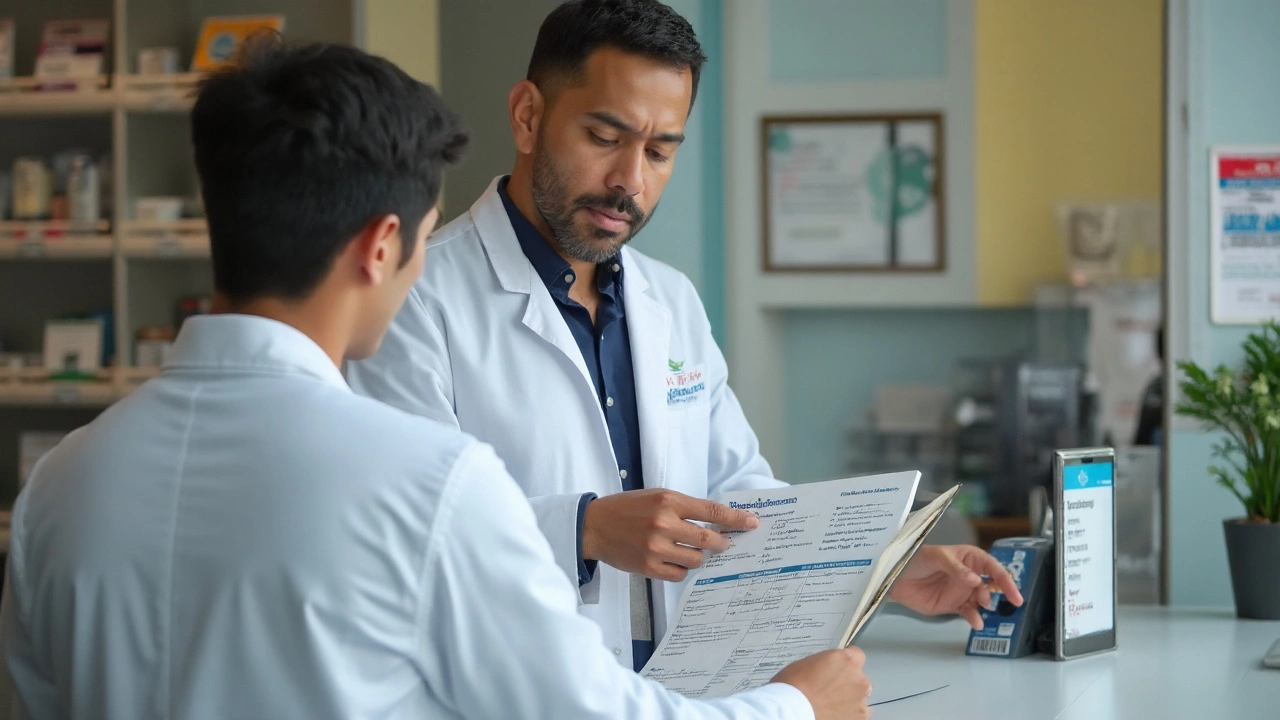
Safe buying checklist for online pharmacies (do this before you order)
Here’s a quick, practical checklist you can follow. It keeps your money safe and your meds legit.
- Get a valid prescription. Paroxetine is a prescription medicine. Real pharmacies check it and may contact your prescriber if details don’t match.
- Verify the pharmacy’s license. Look for proof of registration with the regulator in its country (e.g., Medsafe/Pharmacy Council in NZ, NABP or state board in the US, GPhC in the UK, AHPRA in Australia). Certification programs like .pharmacy domain, LegitScript, or the EU Common Logo also signal legitimacy.
- Check for a physical address and accountable customer support. Real pharmacies are transparent. Avoid sites hiding behind contact forms only.
- Confirm they require a prescription and ask screening questions. A short health questionnaire plus a prescription check is normal. “No Rx needed” is not.
- Match the product. The drug name (paroxetine), form (IR or CR), strength (e.g., 20 mg), quantity, and manufacturer should be shown. Photos that match the product you receive are a good sign.
- Scrutinize price claims. If it’s dramatically below typical market ranges, assume risk of counterfeit, diluted, or mislabelled stock.
- Payment safety. Pay with a method that supports chargebacks (credit card). Avoid wire transfers, crypto, or gift cards.
- Privacy and packaging. Look for a clear privacy policy and discreet, tamper-evident packaging. Tracking numbers are standard for shipped prescriptions.
- Returns and recalls. Read the returns policy for wrong/damaged items. Real pharmacies assist during recalls; they can locate your batch number.
- Keep records. Save order confirmations, batch/lot numbers, and photos of the tablets/blister packs. If anything seems off, contact the pharmacy before taking the medication.
Red flags that should stop you cold:
- They sell prescription meds without any prescription check.
- They offer “starter packs” of paroxetine to try without a doctor.
- They push nonstandard or odd strengths that don’t match common listings.
- They refuse to say where they’re based or who regulates them.
- They hide behind amazing reviews that look copy-pasted across multiple sites.
Pro tips that help in real life:
- Ask for the manufacturer name on your order. Staying with the same generic maker reduces variability in tablet size, look, and inactive ingredients.
- If you’re sensitive to formulation changes, request “do not substitute manufacturer” where allowed.
- If your order is time-sensitive, choose a domestic pharmacy or a chain with proven shipping times rather than an overseas exporter.
Paroxetine vs similar meds: when to consider alternatives
If the goal is cheap, effective, and steady, paroxetine is one option among several SSRIs. Sometimes a different SSRI gives you fewer side effects, a smoother taper, or a better price under your plan. Always make any switch with your prescriber-especially with paroxetine, which can cause notable withdrawal symptoms.
Quick comparisons you can use in a talk with your clinician:
- Sertraline: Often first choice for anxiety and depression. Flexible dosing, widely available, usually low cost. Moderate GI effects early on, lower risk of withdrawal problems than paroxetine.
- Fluoxetine: Very long half-life. That can make discontinuation easier. Sometimes more activating (can feel energizing or jittery early). Often very cheap.
- Citalopram / Escitalopram: Clean interaction profile. Watch doses in older adults due to QT concerns (especially citalopram). Typically well-tolerated and affordable.
- Venlafaxine (not an SSRI): Can help when SSRIs fall short, but has its own discontinuation challenges; blood pressure monitoring may be needed at higher doses.
Where paroxetine can still shine: panic disorder, social anxiety, and OCD-some patients respond especially well. Where it’s trickier: people prone to weight gain, sexual side effects, or those likely to need to taper off quickly in future.
| Medicine | Half-life (approx.) | Discontinuation risk | Common starting strength | Cost tendency (generic) |
|---|---|---|---|---|
| Paroxetine | ~21 hours | Higher vs other SSRIs | 20 mg daily (varies by indication) | Low |
| Sertraline | ~26 hours | Moderate | 50 mg daily | Low |
| Fluoxetine | 2-4 days (active metabolite 7-15 days) | Lower (long half-life) | 20 mg daily | Very low |
| Citalopram | ~35 hours | Moderate | 20 mg daily | Low |
| Escitalopram | ~27-32 hours | Moderate | 10 mg daily | Low-moderate |
Conversation starters with your prescriber if price or side effects are the issue:
- “I’d like to stick with immediate-release to keep costs down-does that work for my case?”
- “If paroxetine causes side effects for me, which alternative fits my symptoms and budget?”
- “Can we write for a 90-day supply to reduce my per-tablet cost?”
- “Can you indicate a specific generic manufacturer to avoid formulation changes?”
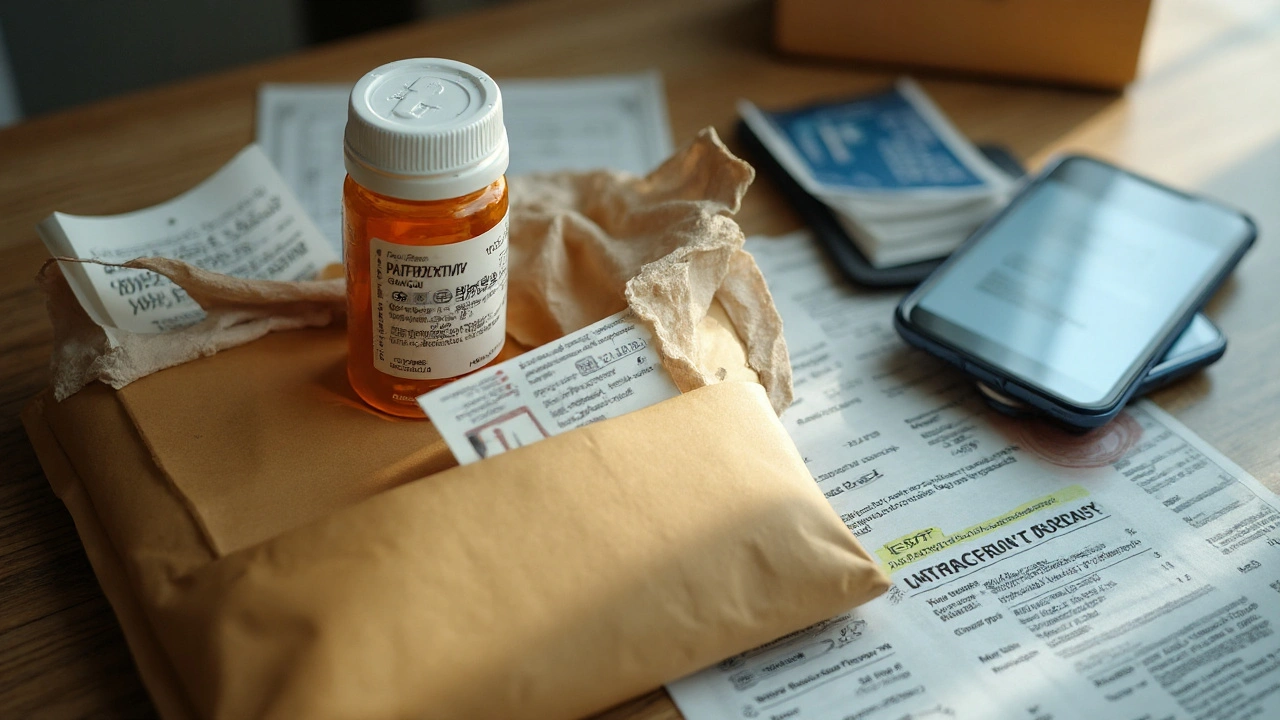
FAQ, next steps, and troubleshooting
Quick answers to the questions people ask right before they order:
- Do I need a prescription? Yes in most countries. Legit pharmacies will ask for one and verify it.
- Is generic as good as brand? Regulators like the FDA, EMA, and Medsafe require bioequivalence. For the same form and strength, therapeutic effect should match.
- Can I split tablets to save money? Only if the tablet is not extended-release and has a score line. Never split CR/ER tablets. Ask your pharmacist first.
- How fast will it arrive? Domestic shipping is often 1-5 business days; international 7-21+ days. Check tracking and plan refills early.
- What if I miss a dose? General advice is to take it when you remember unless it’s close to the next dose-then skip. Don’t double up. Confirm with your pharmacist.
- Is paroxetine okay in pregnancy? Often not first choice. If you’re pregnant or planning, speak to your prescriber about safer alternatives.
- Can I switch from CR/ER to IR for cost? Possibly, with dose adjustments. Only change under clinician guidance.
Simple plan to get this done safely today:
- Confirm paroxetine is right for you with your prescriber. If you’re already stable on it, ask for a 90-day script if appropriate.
- Decide on IR vs CR/ER with your clinician, aiming for IR if cost matters and it fits your case.
- Choose a verified online pharmacy that requires a prescription and lists its regulator. Avoid any “no Rx” offers.
- Compare total cost: unit price × quantity + shipping + fees. Check delivery times.
- Place your order with a payment method that supports chargebacks. Save the receipt, batch numbers, and packaging photos.
- When the parcel arrives, confirm the medicine name, strength, and manufacturer match your order before taking it.
- Set a reminder for refills 10-14 days before you run out to avoid rush fees or gaps in treatment.
Troubleshooting common snags:
- Order delayed: Use tracking. If customs holds it (for international orders), contact the pharmacy for documentation. If time-sensitive, ask your local pharmacy for an interim fill.
- Pharmacy can’t verify your prescription: Ask your prescriber to respond or resend. Make sure your name, DOB, dose, quantity, and directions are clear and match.
- Tablets look different from last time: Generics can vary by manufacturer. Verify the imprint code with your pharmacist. If uncertain, don’t take it until confirmed.
- Price jumped at checkout: Recalculate total cost with shipping and taxes. Check if a different strength/quantity is cheaper per tablet, or switch to IR from CR/ER with prescriber approval.
- Side effects pop up: Don’t stop suddenly. Call your prescriber about dose timing, food effects, or a possible switch. Urgent symptoms like severe agitation, rash, or signs of serotonin syndrome need immediate care.
- Out of stock: Ask for the same strength from a different manufacturer, or a temporary 10 mg × 2 substitution if your prescriber agrees.
Ethical call to action: use a licensed pharmacy that checks prescriptions, pick the formulation that fits your body and your budget, and keep your prescriber in the loop. That’s how you save money without gambling on your health.
Why you can trust this guidance: the rules on generics and pharmacy practice come from primary regulators and clinical bodies-Medsafe and the NZ Formulary for New Zealand specifics, the FDA’s Orange Book and state boards in the US, the EMA and national agencies in Europe, and clinical guidance from organizations like NICE. These are the groups that set and enforce the standards your medicine has to meet.
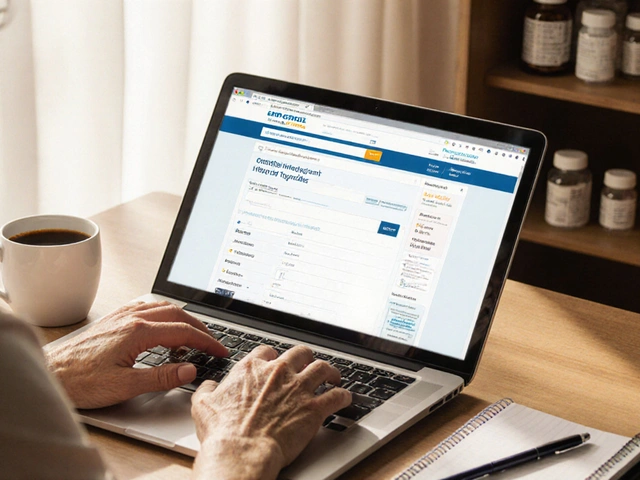

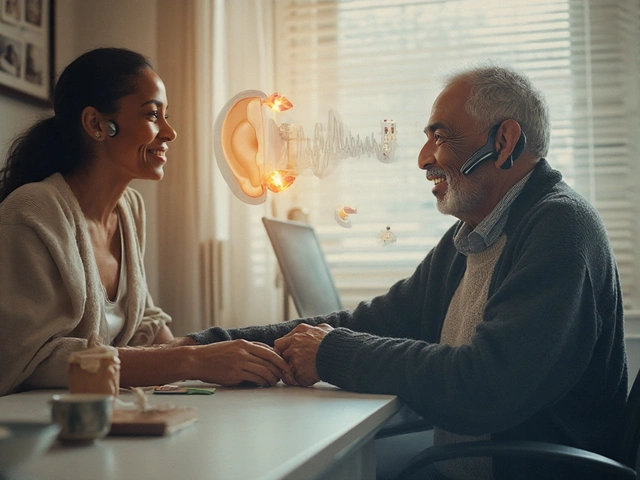

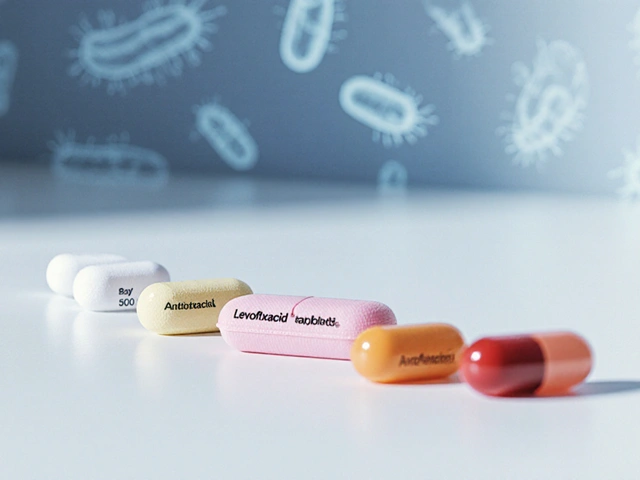
Comments (10)
Joshua Brown
Start with the basics and do them perfectly, because that alone will prevent most scams and mistakes.
Get a valid prescription, pick immediate release if cost is the priority, and ask your prescriber for a 90 day supply when appropriate, it saves you money and time.
Verify the pharmacy license and watch for the usual red flags: no Rx required, absurdly low prices, no physical address, or only crypto and wire transfer options.
Keep receipts, take a photo of the blister and imprint code, and if anything seems off, stop before you swallow anything and contact the pharmacy and your prescriber, document everything.
Shelby Wright
No Rx pharmacies are basically the fast food of pharmaceuticals, cheap, flashy, and usually awful for you.
Don’t get seduced by a glittering price tag or glossy reviews that smell copy pasted, move on, pick a legit source and sleep better.
Also, if a site tries to guilt you into buying quickly with fake scarcity, close the tab and breathe, your brain will thank you later.
Ellen Laird
For those who care about provenance and subtle differences, insist on the manufacturer name up front, it truly matters for tablet feel and excipients.
Also, teh regulatory citations in the post are precisely the sort of anchors one should use when arguing with a stubborn pharmacy clerk.
Keeping to a single generic maker where possible reduces mystery changes and that small consistency is underrated.
sachin shinde
Small correction on phrasing, regulators require bioequivalence standards but that does not mean all inactive ingredients are identical, and that nuance matters, especially for people with allergies or GI sensitivity.
Also, mention that CYP2D6 inhibition has practical downstream effects on medications metabolised by that pathway, and prescribers should get a clear med list during verification, not a vague nod.
Another pragmatic tip is to save the lot number and expiry from the blister, this helps immensely if a recall happens later.
Finally, if a pharmacy refuses to confirm the manufacturer or lot number, consider that a disqualifier right away.
Leon Wood
Follow the checklist, keep your prescriber involved, and you will avoid most headaches.
George Embaid
Adding a cultural lens here, different countries have subtle but real differences in how generics are listed on formularies and what insurers prefer.
Sometimes a cheap generic in one market is not the same product you get in another market even though the active is identical, so if you travel or move, recheck your supplier and formularies.
Also, for people using assistance programs, the pharmacy choice can affect coverage and copays, so stick to on-formulary makers when you can.
When submitting a prescription to an online pharmacy, put clear directions and an up to date med list, that reduces verification delays and prevents unnecessary calls back to your prescriber.
Meg Mackenzie
There is a whole ugly underworld selling pills that may or may not be what they claim, and the paranoia around some of this is warranted.
Keep every tracking number and packaging photo in a folder, and if the imprint is wrong, stop taking the pills and raise hell with the pharmacy and regulator, loudly.
Trust is earned, not given, and these transactions are too important to be casual about.
Shivaraj Karigoudar
Very practical pharmacological perspective, if one digs into the pharmacokinetics and pharmacoepidemiology one finds that paroxetine behaves differently in specific subpopulations because of its strong CYP2D6 inhibitory effect, and that effect has both acute and chronic clinical implications.
First, the inhibition can elevate levels of coadministered drugs that rely on CYP2D6 for clearance, so clinicians should proactively review hard lists of interacting agents and not rely on patient self reporting alone, because missed interactions can lead directly to hospital level complications in some cases.
Second, the withdrawal phenomenon associated with paroxetine is mechanistically linked to its relatively short half life versus fluoxetine and a few others, and that clinical reality should make prescribers consider planning taper schedules from day one rather than as an afterthought, that is important for adherence and long term outcomes.
Third, formulation switches between manufacturers can alter excipient profiles, tablet hardness, and dissolution characteristics, which are minor for many patients but can be major for those with dysphagia or who are sensitive to osmotic loads, therefore continuity of manufacturer matters more than is usually acknowledged in routine practice.
Fourth, shipping across jurisdictions introduces regulatory and customs layers that affect both supplies and legal standing, and patients need to be aware that an international purchase can be seized or delayed in ways domestic purchases are not, which is a logistic risk often underappreciated.
Fifth, when comparing IR and CR options, remember that CR formulations modify pharmacokinetic peaks and troughs and thus the side effect and withdrawal profile, so any switch purely for cost reasons must be clinically justified and accompanied by clear instructions to the patient to avoid inadvertent overdosing or misdosing.
Sixth, documentation is your best defence if something goes wrong, log the lot number, expiry, photos of the blister pack and the tablet imprint, preserve email receipts and any chat transcripts because these are evidence in case of recalls or disputes.
Seventh, from a systems perspective, prescribers and pharmacists should collaborate to preauthorize 90 day fills where possible, and health systems can reduce cost burden by negotiating preferred generic makers that meet supply chain reliability criteria, that is a policy lever worth exploring in clinics and P&T committees.
Eighth, patient education matters: clear, simple scripts about what to expect when starting paroxetine, how to handle missed doses, and the importance of not stopping suddenly should be part of the dispensing process every time, repeated and documented.
Ninth, clinicians should flag paroxetine in women of childbearing potential and document shared decision making about pregnancy risks versus benefits, since the signal for congenital effects is nontrivial and needs balanced discussion.
Tenth, remember that cost saving is not just a pharmacy problem it is a clinical one, and sometimes the cheapest pill is the wrong pill if it leads to side effects, discontinuation, or interaction harm that results in higher overall costs, so think holistically when advising patients on switching.
Eleventh, for those pressed for time or in rural areas a local pharmacist can often do a temporary emergency supply after a phone consult with the prescriber, which is a safer bridge than ordering from dubious online vendors, so know your local options and build that relationship.
Twelfth, finally, treat medication procurement as a safety critical process, not a commodity purchase, and ensure that both prescribers and patients maintain documentation, call logs, and an escalation pathway to local regulatory bodies if things look wrong, that approach will catch most issues early and reduce harm.
andrew bigdick
Calm note here, if packaging or imprint seems off, stop taking the pills and get a professional to check them, do not self decide to continue based on a gut feeling alone.
Document and exchange info with the pharmacy, and escalate to the regulator if needed, that preserves safety for everyone.
rafaat pronoy
Spot on about keeping records and lot numbers, that detail saves headaches later and courts pay attention to it too.
Also, domestic pharmacies are often the fastest solution when time matters, track everything and keep calm, smile, and be polite when asking for help :)